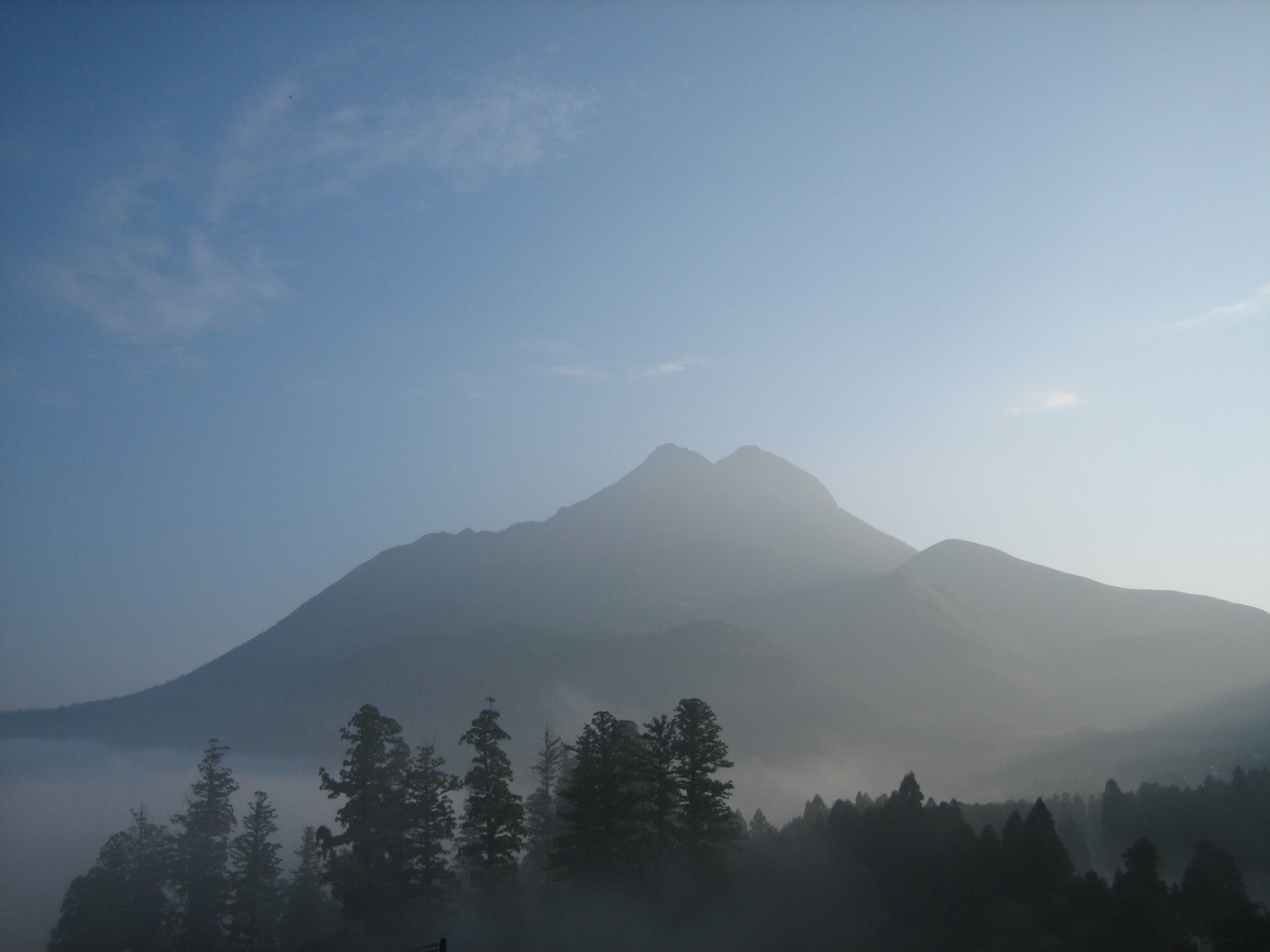Yufu, Ōita on:
[Wikipedia]
[Google]
[Amazon]
 is a
is a
city
A city is a human settlement of notable size.Goodall, B. (1987) ''The Penguin Dictionary of Human Geography''. London: Penguin.Kuper, A. and Kuper, J., eds (1996) ''The Social Science Encyclopedia''. 2nd edition. London: Routledge. It can be def ...
in Ōita Prefecture
is a prefecture of Japan located on the island of Kyūshū. Ōita Prefecture has a population of 1,136,245 (1 June 2019) and has a geographic area of 6,340 km2 (2,448 sq mi). Ōita Prefecture borders Fukuoka Prefecture to the northwest, Kum ...
, Japan. The modern city of Yufu was established on October 1, 2005, from the merger of the towns of Hasama, Shōnai, and Yufuin (all from Ōita District). , the city has an estimated population of 33,120, and a population density of 104 persons per km². The total area is 319.32 km².
Geography
Yufu is located in centralŌita Prefecture
is a prefecture of Japan located on the island of Kyūshū. Ōita Prefecture has a population of 1,136,245 (1 June 2019) and has a geographic area of 6,340 km2 (2,448 sq mi). Ōita Prefecture borders Fukuoka Prefecture to the northwest, Kum ...
, surrounded by mountains, such as Yufudake (1,583 m), Shirogatake, and Tokiyama. The Ōita River created an alluvial fan
An alluvial fan is an accumulation of sediments that fans outwards from a concentrated source of sediments, such as a narrow canyon emerging from an escarpment. They are characteristic of mountainous terrain in arid to semiarid climates, but a ...
, where farming is done. Part of the city is named as a portion of Aso Kujū National Park
is a national park in Kumamoto and Ōita Prefectures, Japan. The park derives its name from Mount Aso, the largest active volcano in Japan, and the Kujū mountains.
History
Established as Aso National Park in 1934, in 1986 after extensio ...
. Also, Yufu is known for its many hot springs
A hot spring, hydrothermal spring, or geothermal spring is a spring produced by the emergence of geothermally heated groundwater onto the surface of the Earth. The groundwater is heated either by shallow bodies of magma (molten rock) or by circ ...
.
Rivers
* Ōita River * Yufu River * Iwaki RiverLakes
* Lake Kinrin * Lake YamashitaNeighboring municipalities
* Ōita *Beppu
is a city in Ōita Prefecture on the island of Kyushu, Japan. As of March 31, 2017, the city had a population of 122,643
* Usa
The United States of America (U.S.A. or USA), commonly known as the United States (U.S. or US) or America, is a country primarily located in North America. It consists of 50 states, a federal district, five major unincorporated territori ...
* Taketa
* Kusu
* Kujū
Climate
Yufu has ahumid subtropical climate
A humid subtropical climate is a zone of climate characterized by hot and humid summers, and cool to mild winters. These climates normally lie on the southeast side of all continents (except Antarctica), generally between latitudes 25° and 40° ...
(Köppen climate classification
The Köppen climate classification is one of the most widely used climate classification systems. It was first published by German-Russian climatologist Wladimir Köppen (1846–1940) in 1884, with several later modifications by Köppen, notabl ...
''Cfa'') with hot summers and cool winters. Precipitation is significant throughout the year, but is somewhat lower in winter. The average annual temperature in Yufu is . The average annual rainfall is with June as the wettest month. The temperatures are highest on average in August, at around , and lowest in January, at around . The highest temperature ever recorded in Yufu was on 10 August 2013; the coldest temperature ever recorded was on 3 February 2012.
Demographics
Per Japanese census data, the population of Yufu in 2020 is 32,772 people. Yufu has been conducting censuses since 1920.History
* 1889: Villages Anan, Higashishōnai, Nishishōnai, Minamishōnai, Asono, Tani, Yufugawa, Yunohira, Iwakigawa, and Hasama are created in Ōita District. Kitayufu, Minamiyufu, and Yunohira are created in Hayami District. * 1899: Yunohira village is moved to Ōita District. * 1936: Minamiyufu and Kitayufu are merged, creating Yufuin village. * 1948: Yufuin village is renamed Yufuin town. * 1950: Yufuin town is moved to Ōita District. * 1954: Hasama, Tani, Yufugawa, and Iwakigawa is merged, now named Hasama village. A month later, Anan, Asono, Higashishōnai, Minamishōnai, and Nishishōnai are united. It is named Shōnai village. * 1955: Yufuin and Yunohira are merged. The new town is named Yufuin, but the character for "Yu" is different from the one before. In the same year, Shōnai village is renamed Shōnai town and Hasama village is renamed Hasama town. * 2005: Hasama, Shōnai, and Yufuin are united, the new city named Yufu.References
External links
* * {{DEFAULTSORT:Yufu, Oita Cities in Ōita Prefecture